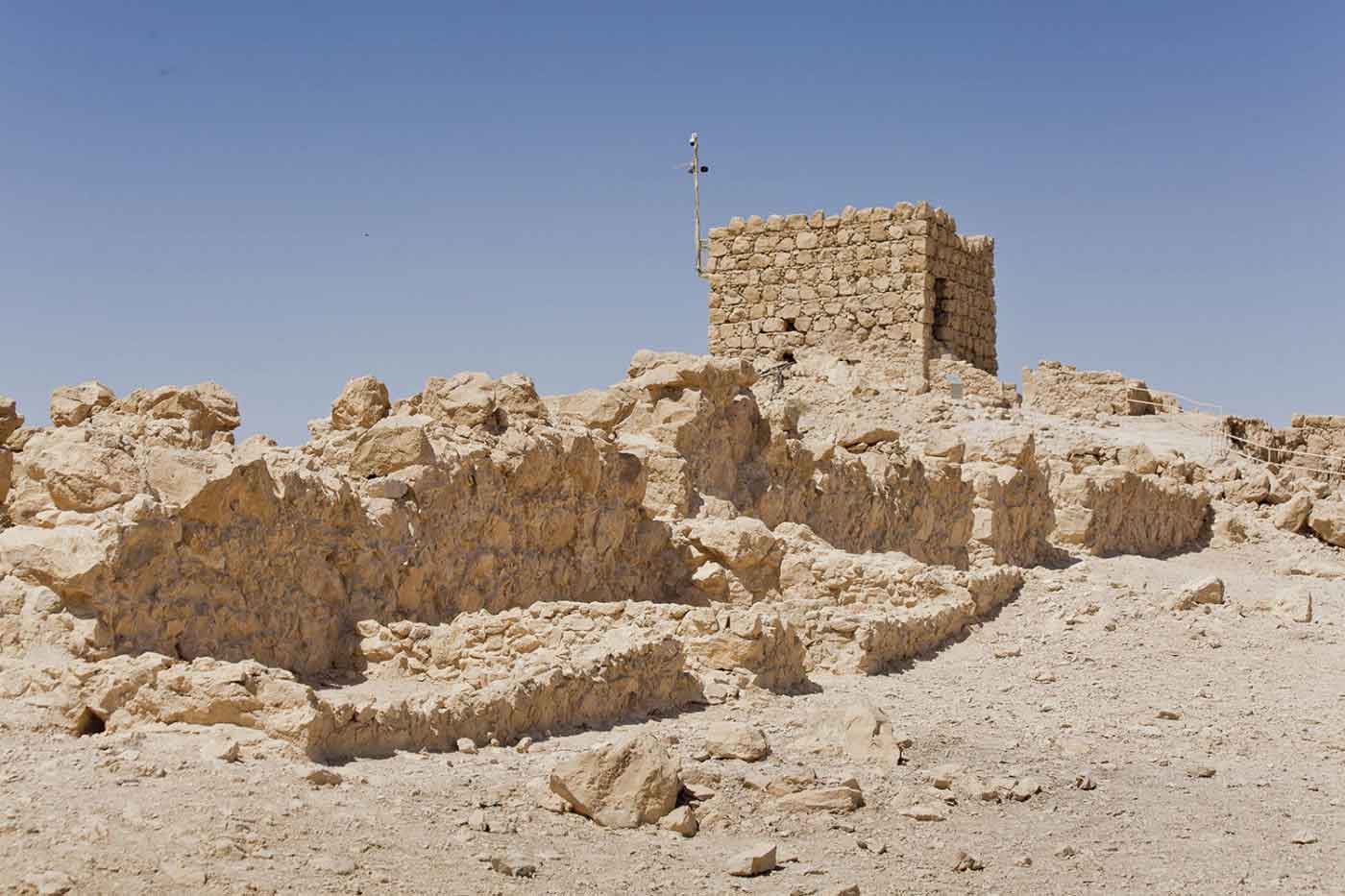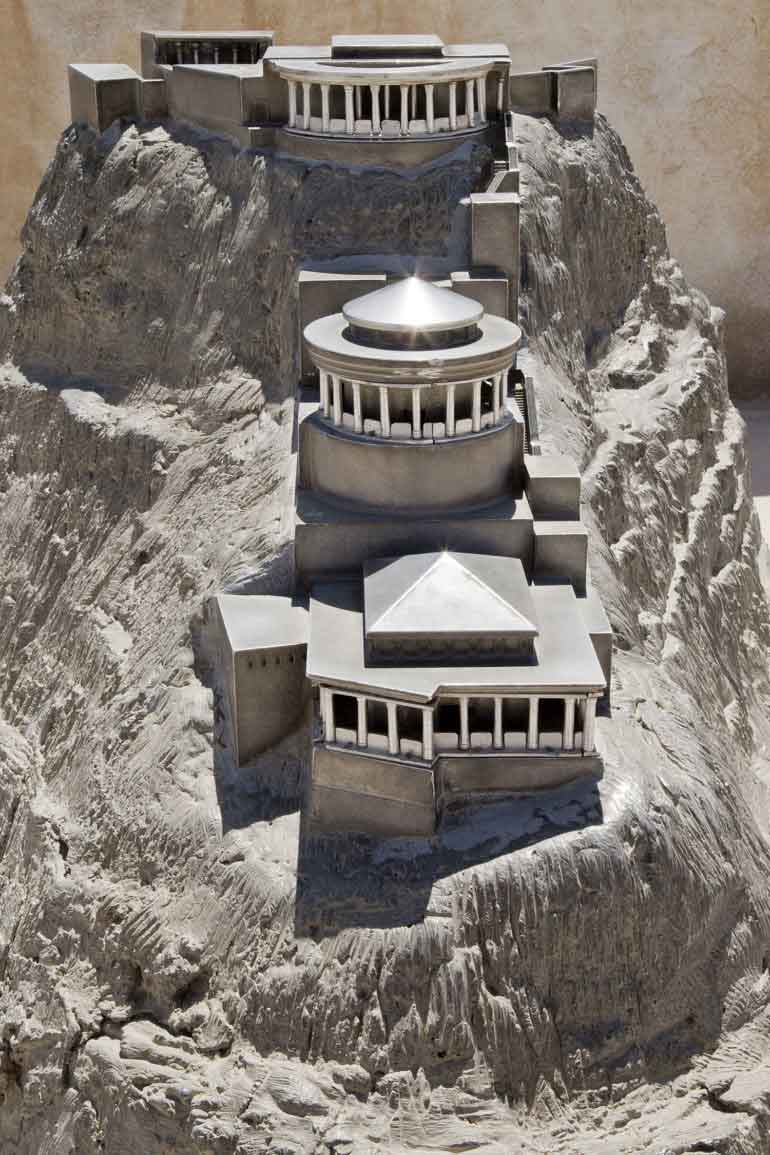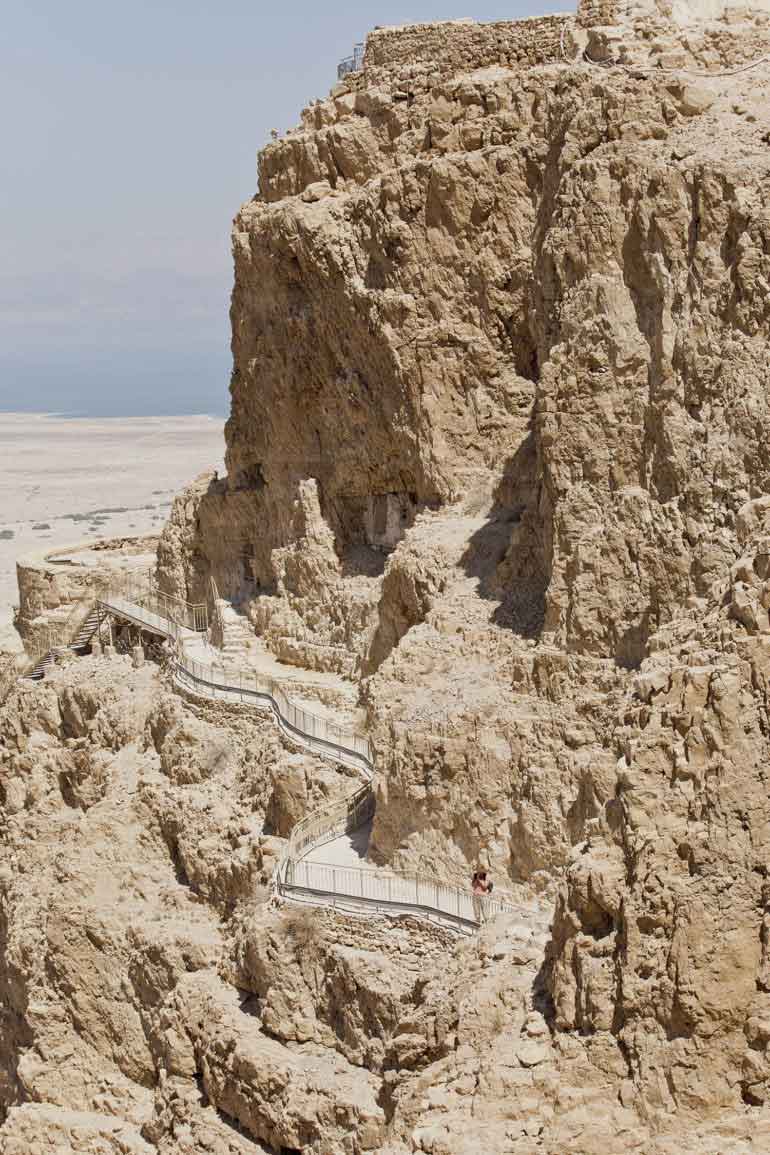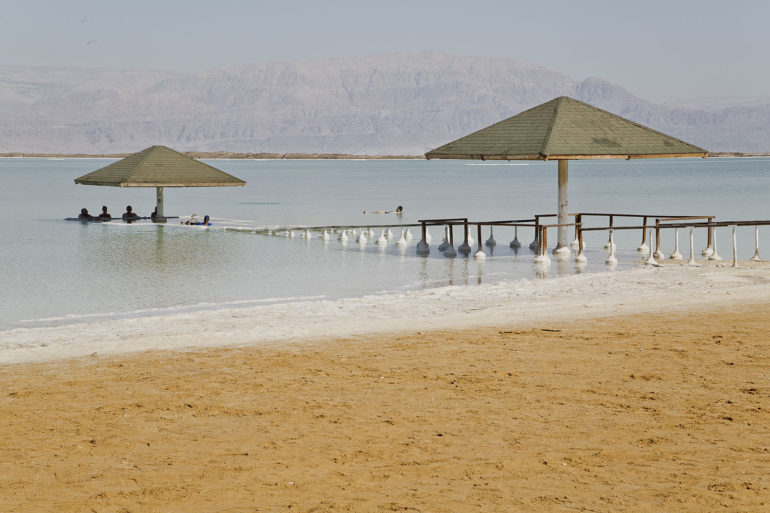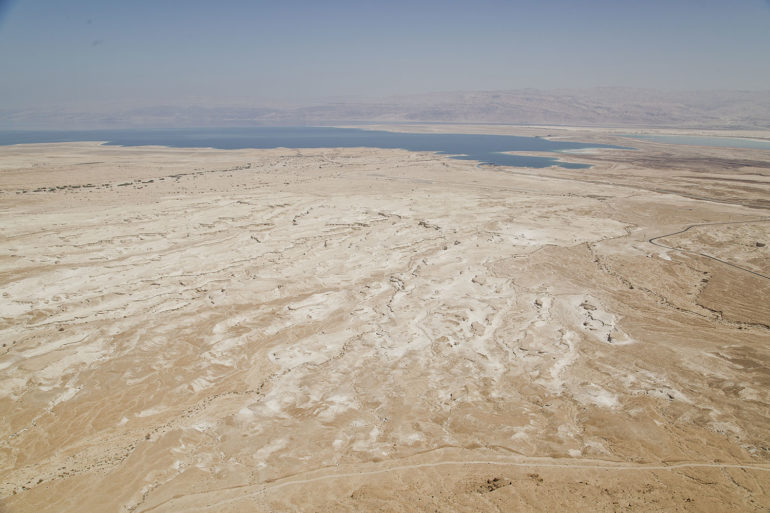Zack Cahill checks off a bucket-list experience at the lowest point on earth and learns a thing or two about Israeli history in the process.
On the eastern edge of the Judaean desert, the gigantic temple of Masada sits baking in the oppressive heat. It’s the kind of heat that sends you scurrying for shade like an exposed bug under a stone and demands you drink your body weight in water roughly every fifteen minutes. I’ve done my standard thing of packing in the dark by plunging my hand into my wardrobe, dragging out whatever entrails I find and stuffing them in my single carry-on bag, without so much as looking at them. So I bolt off the tour bus and straight to the gift shop, sizzling all the way, and buy some cheap sunglasses and a military-issue cap that makes me look like an American Marine.
Then it’s into the cable car for the long ride up to the fortified site atop a mountain. The place was built by Herod ‘The Great’ who was, it has to be said, a total madman. Amongst other things, he killed his wife and preserved her in honey so he could pull her out now and then and have his way with her. But Weinstein-esque shenanigans notwithstanding, the guy could really build a fortified castle.
The structure, built between 37 and 31 BCE, has barracks, an armoury, cisterns which were refilled by rainwater and a fully functioning sauna and bathhouse. All of this atop a thousand-foot mountain. It really is amazing what you can do with an army of slaves at your disposal.
Archaeologists found a date seed in what was once a pantry. They planted the seed and miraculously, even after two thousand years on the floor of an ancient room, it sprouted. They called the product the Methuselah tree.
During one of our shade and water breaks, I learn the sad dramatic story of Masada.
In 66 CE, a group of Jewish rebels was hiding out here from the Romans. The Romans arrived and set up camp at the foot of the mountain. They set their slaves to work building a siege ramp, as one does.

This story first appeared in The Non-Stop Tel Aviv Issue, available in print and digital.
Subscribe today or purchase a back copy via our online shop.
My guide, Yonatan of Israel LGBTQ specialists Outstanding Travel – a typical, gay Israeli in that he looks like he’s carved out of marble – points to the ruins of the Roman settlement and the ramp. It’s still clearly discernible; a suspiciously flat, man-made angle jutting up toward the fortress.
“And who built the ramp do you think?” he prompts.
“Jewish slaves?” I reply.
He nods. “So imagine looking down and seeing someone you know, a friend or relative, wasting away in the heat for months to build something that’s going to kill you.”
Eventually, that’s exactly what they did, or at least the first part. By the time the Romans got over the castle walls, the Jewish rebels had committed mass suicide rather than become slaves. That’s the theory anyway, all we know about Masada comes from a first-century scholar called Josephus. It’s a controversial story with some seeing it as a heroic moment and others as a cautionary tale against extremism. You can’t help but picture the bodies littered about the place as you walk through it.
The area is also tectonically unstable; there’s a severe earthquake every ninety years, but still, significant remnants of Masada stands as a two-thousand-year-old testament to the architectural ingenuity of history’s greatest madman.
We drive on, to the Dead Sea. As we wind our way down the desert roads, down steep hills with the sea to our left, Yonatan points to a marking on a wall, left by some British scientists in 1915.
“Weinstein-esque shenanigans aside, King Herold could really build a castle.”
“That’s how high the sea was back then,” he says.
The Dead Sea, it seems, is dying. This giant iconic body of water, a gigantic nature reserve, is in fact evaporating an alarming rate. But hope isn’t lost. Israel had been building a canal system to bring water here from the Red Sea in hopes of stopping it.
At a resort by the sea, we slip into swimwear and bathrobes and head out to the beach where the hotel has laid out a fruit platter and champagne. If you haven’t yet drunk champagne while lying on your back, perfectly buoyant, in the sea, you need to. It’s like getting into a bath. The air is 40 degrees and the water feels the same. On the other side of the lake (because that’s what it is, not a sea, but a large salt lake, hence the buoyancy) you can see the Jordan.
So we climb in and lie back in the water. You don’t want to get it on your face; and any small cuts will sting, so it’s best to lie back with your hands behind your head. I’ve spent some time in flotation tanks so I’m used to the sensation. It is incredibly relaxing to have your joints completely unloaded. The air being the same temperature as the water gives the feeling of floating on air. If it weren’t for the risk of third-degree sunburn, I can fall asleep here for hours.
Afterwards, we climb out and scrub ourselves with Dead Sea mud (out of a packet, slightly less authentic but possibly more hygienic) and let it dry and crack in the sun before washing it off again. I feel like I’ve got baby’s skin and am in desperate need of a nap.
I hope the crackpot scheme to refill the Dead Sea water works, because it’s a magical place. There’s something about it that takes me back to my childhood, reminiscent of the scene in Mary Poppins where they all laugh so much they float up to the ceiling and have lunch there. Like that, but with champagne and with some Israeli eye-candy.
Zack’s day trip to the Dead Sea was hosted by LGBTQ Israel travel specialists, Outstanding Travel.
Photography by Martin Perry


